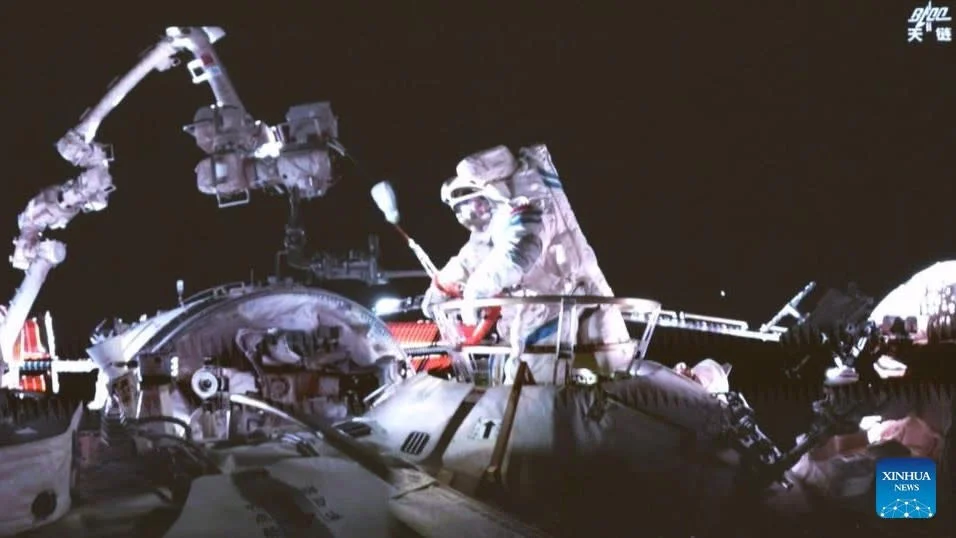
China’s Tiangong Space Station Gets Debris Shield Upgrade: Astronauts Complete Ambitious Spacewalk
In a significant stride for space station maintenance and safety, Chinese astronauts aboard the Tiangong space station have successfully completed an eight-hour spacewalk to install crucial debris shields. This mission, carried out by the Shenzhou-20 crew, highlights China's commitment to ensuring the long-term viability of its orbiting laboratory. The astronauts, Chen Dong and Chen Zhongrui, ventured outside the station to fortify it against potential micrometeoroid impacts, a growing concern in low-Earth orbit.

The spacewalk, which took place recently, involved the astronauts exiting through the Tianhe module's node cabin, marking the first time this airlock was used for such an activity since Tiangong became operational. A key objective was to position protective sheets on designated exterior locations with assistance from the station's robotic arm. This meticulous task underscores the importance of protecting the sensitive equipment and modules that keep the station running smoothly.
According to the China Manned Space Agency (CMSA), this was the 19th EVA conducted by taikonauts aboard Tiangong. Many of these spacewalks have focused on installing debris shields, reflecting the ongoing effort to mitigate risks posed by orbital debris. In addition to the debris shield installation, the astronauts also performed routine station maintenance and equipment inspections, ensuring that all systems are functioning optimally.
The Shenzhou-20 crew, which arrived at Tiangong on April 24 for a six-month mission, has been busy with a variety of experiments. These include groundbreaking research in space-based regenerative biology using flatworms. This pioneering experiment aims to study the effects of microgravity and radiation on planarian regeneration, providing valuable insights into life sciences in space. They are also performing experiments inside the Wentian lab module, observing samples in the biotechnology experiment cabinet, and collecting solid culture specimens. The retrieved data and returned samples will aid researchers in analyzing microbial behaviors in cell tissue cultures.

Senior Colonel Chen Dong, the mission commander, is no stranger to spacewalks, having participated in three during the Shenzhou XIV mission. This spacewalk was the first for Chen Zhongrui, highlighting the growing experience within China's astronaut corps.
With the Shenzhou-21 mission planned for later in the year, China's commitment to its space program remains strong. The Tiangong space station, completed in 2022, is expected to remain operational for at least the next decade, solidifying China's presence in space exploration.
What are your thoughts on the future of space exploration? Do you believe that debris mitigation is a crucial aspect for the long-term success of space stations? Share your opinions in the comments below.